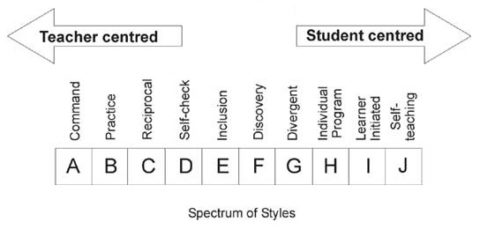The Art of Teaching for Learning
The Art of Teaching for Learning
The Subzero Coaching trainees spend a lot of time developing their teaching styles and skills; after all, they are training to become ski instructors. Something that can be forgotten or left to the end of the day with just a nod to the basics, a ski instructor’s job is to teach and is a fundamental we are keen to develop on our courses. The long lunches and chairlift conversation are just a bonus!
Ski instruction has long moved on from the “…follow me and copy…” mentality, and just like technical skill good teaching skills is something that is trained, not just an innate ability.

Should you think about learning styles?
Many organisations are continuing to use the idea that there are ‘learner styles’ e.g. visual, auditory and kinaesthetic (VAK) but this research is a long way out of date and it has been proven there is no evidence supporting the claim1. You may well have yourself pegged as one of these, as for more than 30 years the idea has been around in education, but unfortunately researchers have not used methods that have any scientific credibility2.
Instead let’s consider the acronym VAK as a prompt rather than a learner-style guide. The more opportunities a learner has to engage with what they are trying to learn the more successful and permanent it will be. So whilst you should not categorise people4, do provide visual, audible and kinaesthetic opportunities to your students in combinations every time.
Learn instead from effective teaching styles
Matching the teaching style to the learner is a tricky task and difficult to understand, especially when on the mountain there is so much else to consider. Subzero Coaching trainees are encouraged to mix up their teaching styles and use multiple ones in the same lesson to aid learning.
Command | Practice | Reciprocal | Self-Check| Inclusion | Guided Discovery | Convergent | Divergent | Learner-Designed | Learner-Initiated | Self-Taught
Teaching styles5 are considered to be on a spectrum, first developed by Mosston in 1990, moving from a teacher centred approach to student centred. The level of responsibility the learner takes for themselves also increases, and does the range of decision making.

Spectrum of Teaching Styles
However this does not mean only command and practice should be used for beginners and novice instructors. Mixing up the teaching styles takes more confidence by the instructor but will create a much more worthwhile and enjoyable experience. However be aware that the more questions and decisions a student can make. The more the instructor need to know exact technique as so to guide appropriate towards the ‘correct’ answers.
“Instructional techniques that are highly effective with inexperienced learners can lose their effectiveness and even have negative consequences when used with more experienced learners.”
It has been scientifically proven the novices learn better when using examples, whereas those with more expertise will learn better by problem-solving themselves3, known as the Expertise Reversal Effect. However others warn that learners must also practice compensating for their weakness, not avoiding them. Teacher-centred instruction is still appropriate for the advanced clients.
How can you give your students diverse chances to learn?
- Give demonstrations from different angles
- Talk about the technique, sometimes using technical language, sometimes without a single technical word
- Allow learners to try an activity
- Explain using metaphors and similes “…imagine you are…” “…it’s like a…”
- Ask the learner to explain it back to you
- Select and practice specific parts of the activity
- Ask the learner to try something without seeing it first, and then try and figure it out together
- Allow students to teach someone else in the group
- Give feedback in multiple intrinsic and extrinsic ways; spoken from teacher, lines in the snow, video
Summary
In summary, active and engaging lessons are more enjoyable and students learn better. The ISIA team are developing confidence in their teaching abilities which is what our coaches Fede and Caroline are for. Utilising workshops, teaching small groups, role-play, analysing and reviewing others’ lessons. The way we learn is the way we teach. The more you experiences when you are learning to become an instructor will help you become the best teacher you can be.
Good luck to those teaching over the Christmas and New Year holidays – you will be fab!
Caroline George
To find out more about our Level 3 ISIA Training programme please click here.
To find out more about all our ski instructor courses please visit the dedicated page here!